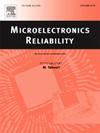New methodology for optimal preconditioning of GaN HEMT devices
IF 1.9
4区 工程技术
Q3 ENGINEERING, ELECTRICAL & ELECTRONIC
引用次数: 0
Abstract
High Electron Mobility Transistors (HEMTs) based on p-type Gallium Nitride (p-GaN) gate have emerged as promising candidates for next-generation high frequency and high-power applications. However, these devices present a threshold-voltage (Vth) fluctuation impacting their performance and reliability over time. While Vth fluctuations have been commonly associated with device aging, recent research has uncovered evidence suggesting that certain variations are unrelated to aging effects but rather stem from potentially recoverable trapping phenomena.
This study has demonstrated that the biases applied to the gate and drain contribute to the observed variations in Vth. To mitigate these fluctuations, a systematic methodology is proposed for establishing an optimal preconditioning protocol capable of stabilizing the Vth and ensuring consistent device measurements over different biasing conditions. The optimal electrical preconditioning protocol involves applying a defined voltage to the gate and or to the drain right before Vth measurement, ensuring an acceptable stability of Vth measurements. Furthermore, our findings illustrate that the preconditioning protocol is dependent on the technology of the reference.
GaN HEMT器件最佳预处理的新方法
基于p型氮化镓(p-GaN)栅极的高电子迁移率晶体管(hemt)已成为下一代高频和高功率应用的有希望的候选者。然而,随着时间的推移,这些器件呈现阈值电压(Vth)波动,影响其性能和可靠性。虽然Vth波动通常与设备老化有关,但最近的研究发现有证据表明,某些变化与老化效应无关,而是源于潜在可恢复的捕获现象。本研究表明,应用于栅极和漏极的偏置有助于观察到Vth的变化。为了减轻这些波动,提出了一种系统的方法来建立一个最优的预处理协议,该协议能够稳定Vth并确保在不同偏置条件下设备测量的一致性。最佳的电气预处理方案包括在Vth测量之前对栅极和漏极施加一个规定的电压,以确保Vth测量的可接受稳定性。此外,我们的研究结果表明,预处理协议是依赖于参考技术。
本文章由计算机程序翻译,如有差异,请以英文原文为准。
求助全文
约1分钟内获得全文
求助全文
来源期刊

Microelectronics Reliability
工程技术-工程:电子与电气
CiteScore
3.30
自引率
12.50%
发文量
342
审稿时长
68 days
期刊介绍:
Microelectronics Reliability, is dedicated to disseminating the latest research results and related information on the reliability of microelectronic devices, circuits and systems, from materials, process and manufacturing, to design, testing and operation. The coverage of the journal includes the following topics: measurement, understanding and analysis; evaluation and prediction; modelling and simulation; methodologies and mitigation. Papers which combine reliability with other important areas of microelectronics engineering, such as design, fabrication, integration, testing, and field operation will also be welcome, and practical papers reporting case studies in the field and specific application domains are particularly encouraged.
Most accepted papers will be published as Research Papers, describing significant advances and completed work. Papers reviewing important developing topics of general interest may be accepted for publication as Review Papers. Urgent communications of a more preliminary nature and short reports on completed practical work of current interest may be considered for publication as Research Notes. All contributions are subject to peer review by leading experts in the field.
 求助内容:
求助内容: 应助结果提醒方式:
应助结果提醒方式:


